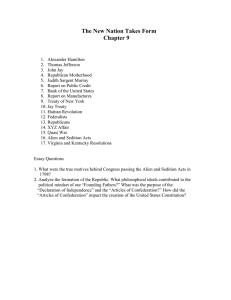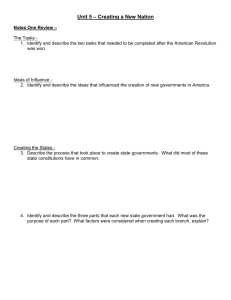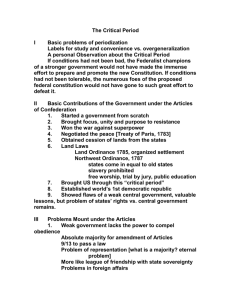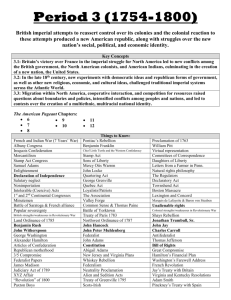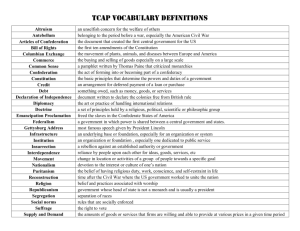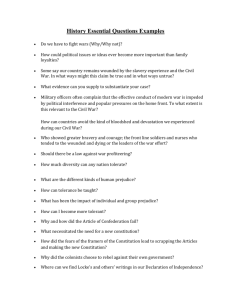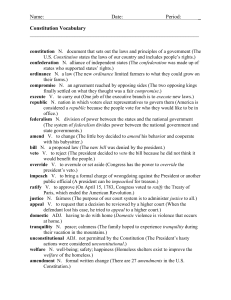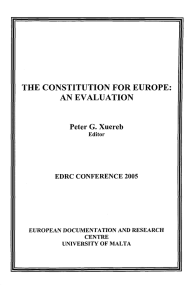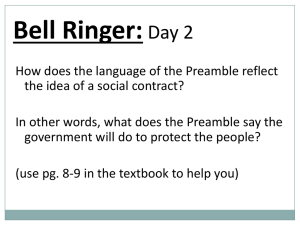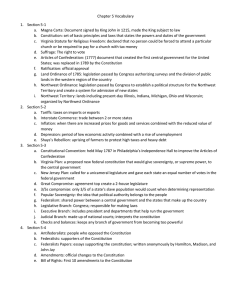AP US HISTORY UNIT 2 GUIDE
advertisement
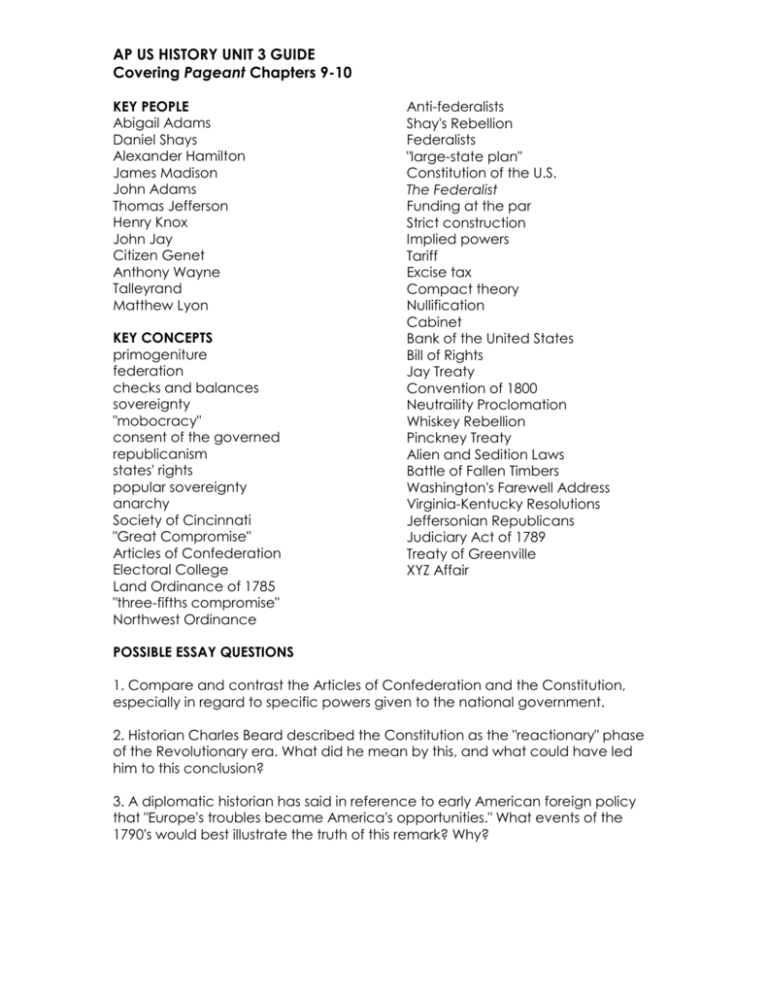
AP US HISTORY UNIT 3 GUIDE Covering Pageant Chapters 9-10 KEY PEOPLE Abigail Adams Daniel Shays Alexander Hamilton James Madison John Adams Thomas Jefferson Henry Knox John Jay Citizen Genet Anthony Wayne Talleyrand Matthew Lyon KEY CONCEPTS primogeniture federation checks and balances sovereignty "mobocracy" consent of the governed republicanism states' rights popular sovereignty anarchy Society of Cincinnati "Great Compromise" Articles of Confederation Electoral College Land Ordinance of 1785 "three-fifths compromise" Northwest Ordinance Anti-federalists Shay's Rebellion Federalists "large-state plan" Constitution of the U.S. The Federalist Funding at the par Strict construction Implied powers Tariff Excise tax Compact theory Nullification Cabinet Bank of the United States Bill of Rights Jay Treaty Convention of 1800 Neutraility Proclomation Whiskey Rebellion Pinckney Treaty Alien and Sedition Laws Battle of Fallen Timbers Washington's Farewell Address Virginia-Kentucky Resolutions Jeffersonian Republicans Judiciary Act of 1789 Treaty of Greenville XYZ Affair POSSIBLE ESSAY QUESTIONS 1. Compare and contrast the Articles of Confederation and the Constitution, especially in regard to specific powers given to the national government. 2. Historian Charles Beard described the Constitution as the "reactionary" phase of the Revolutionary era. What did he mean by this, and what could have led him to this conclusion? 3. A diplomatic historian has said in reference to early American foreign policy that "Europe's troubles became America's opportunities." What events of the 1790's would best illustrate the truth of this remark? Why?

